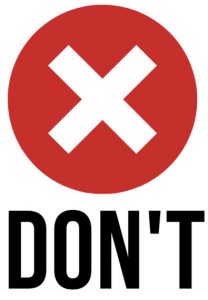How to create the best cv
Having a good CV is crucial to impressing an employer, it tells them who you are without even directly speaking to them. It is important that you write your CV in a clear and concise manner that will encourage employers to continue reading rather than putting it down and moving on to the next. Something as simple as one spelling or grammar mistake could suggest to the employer that you are not serious about the role you are applying for, so it is essential that your CV is perfect.
 Personal information:
Personal information:
- Name and professional title
- Location- town and county
- Email address
- Phone number- most reachable contact number
Personal profile:
- Outline your goals and where you want your career to progress.
Employment history:
- Place at which you worked or undertook work experience
- The year you started and finished the role
- The role which you fulfilled whilst at the place of work
Education:
- Place at which you completed your studies
- The courses you studied
- The year you started and completed the study
- The grade that you obtained.
These should be listed in reverse chronological order.
Skills and qualities:
- Make sure these are relevant to the job that you are applying for or will interest the employer.
 Keep it simple-
Keep it simple-
Your choice of font and layout are essential to the readability of your CV. It is vital that you choose a clear and formal font, such as Times New Roman or Arial. This font should also be a specific size- 10 to 12 size fonts for the body text and 14 to 18 for the headings of your CV.
Use a CV template-
Using a CV template keeps your information in a clear and concise layout. Although you may feel that it limits your creativity, it ensures that employers will continue to read your CV as the information is easy to read.
Check your CV-
It is essential that you check your CV over and over again. It is such a bad first impression if your CV is littered with spelling or grammar mistakes. It leads employers to believe that you are perhaps lazy and won’t be enthusiastic about the job you are applying for. Use a site such as Grammarly which will check the spelling and the grammar of your CV.
Make sure your CV is up-to-date-
Another key element of your CV is that it is up-to-date. If you have many years of professional experience then it may be appropriate for you to remove any experience that is 10 or more years old. This will make sure that your CV is concise, and you aren’t providing employers with irrelevant or useless information.
Make sure your CV isn’t too long-
Generally, it is recommended that a CV should be around two pages long. However, in some jobs and industries, one page may be sufficient and some industries may require more than two pages. Make sure that you tailor the length to the industry in which you are founding a career.
 Include a photo:
Include a photo:
It is not a standard feature of a CV in the UK. Some countries may want you to include a headshot of yourself, so make sure you check the requirements of your country or the specifications of the place that you are applying to work at.
Age and date of birth:
It is not necessary for you to include your age or date of birth, as employers should not discriminate upon your ability to perform a job due to your age. Employers are in fact prohibited from discriminating against a job candidate due to their age under the 1967 Age Discrimination Act.
Use misleading information or lying in your CV:
It is vitally important that you don’t use misleading or incorrect information in your CV. It will only lead to you being caught out in the end when an employer wants to see you perform a skill or quality that you claim to have. Keep all information that you provide about yourself true to who you are to avoid an employer being misled into thinking you are somebody you are not. Make sure that you keep your CV factual.
Include irrelevant personal information:
Don’t include information that is not relevant to the job that you are applying for. Employers don’t want to know about the time that you rescued your grandma’s cat from a tree or competed in a trampoline competition. They are only concerned about information that will benefit them, they want to see that you have qualities that will improve or have benefits to their business.
Applying for positions you are not qualified for:
It is important that you don’t apply for jobs that you are not qualified for. At the end of the day, you are not only wasting your time but you are also wasting the employers time too. You can’t just apply for a job because you like the sound of it, you need to make sure that you are properly qualified to do the job.
If you need help with directing your career here at Stirling Warrington, we provide a free career consultation service. Give us a call on 01509 323532 to find out more.
To stay up-to-date with what’s going on with our business, make sure you follow us on all of our social media accounts!
Click on the links below to see our social media.

